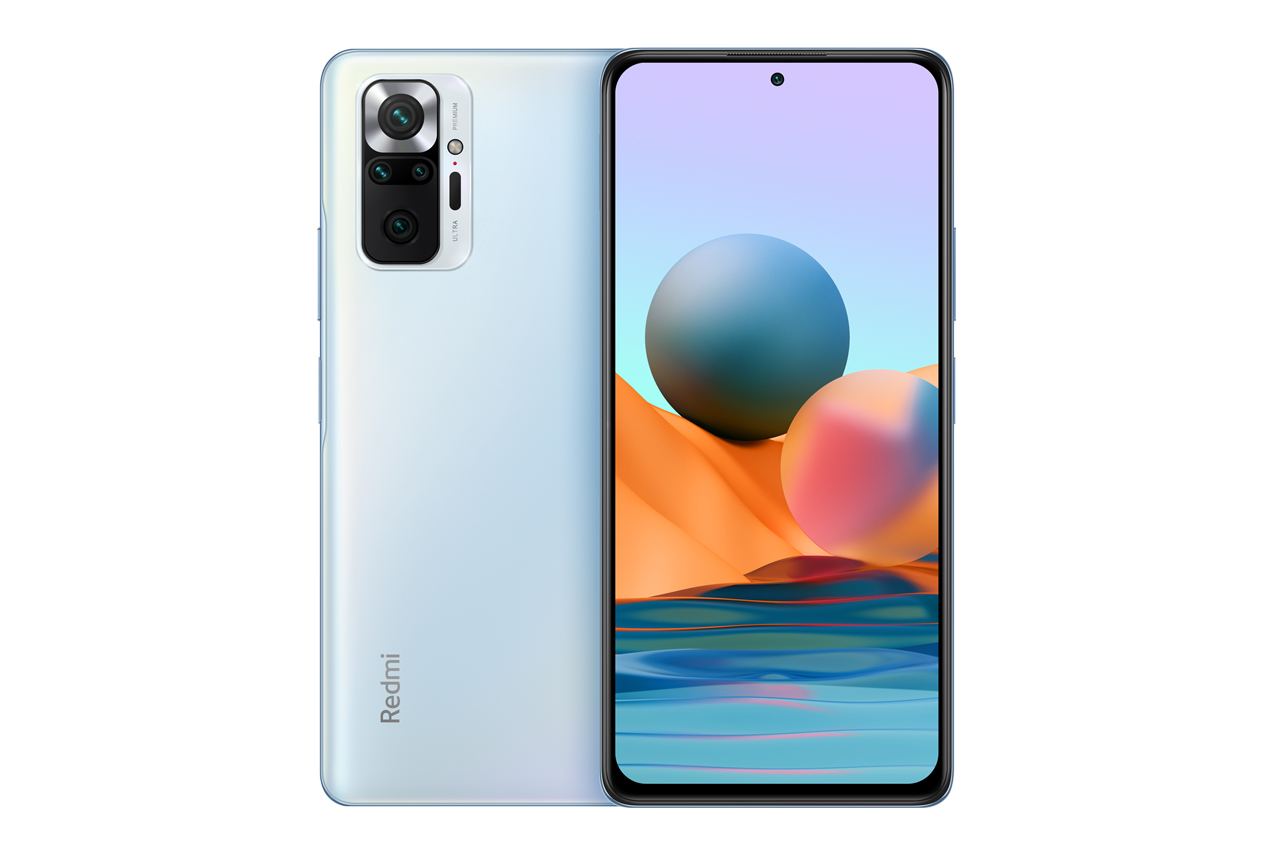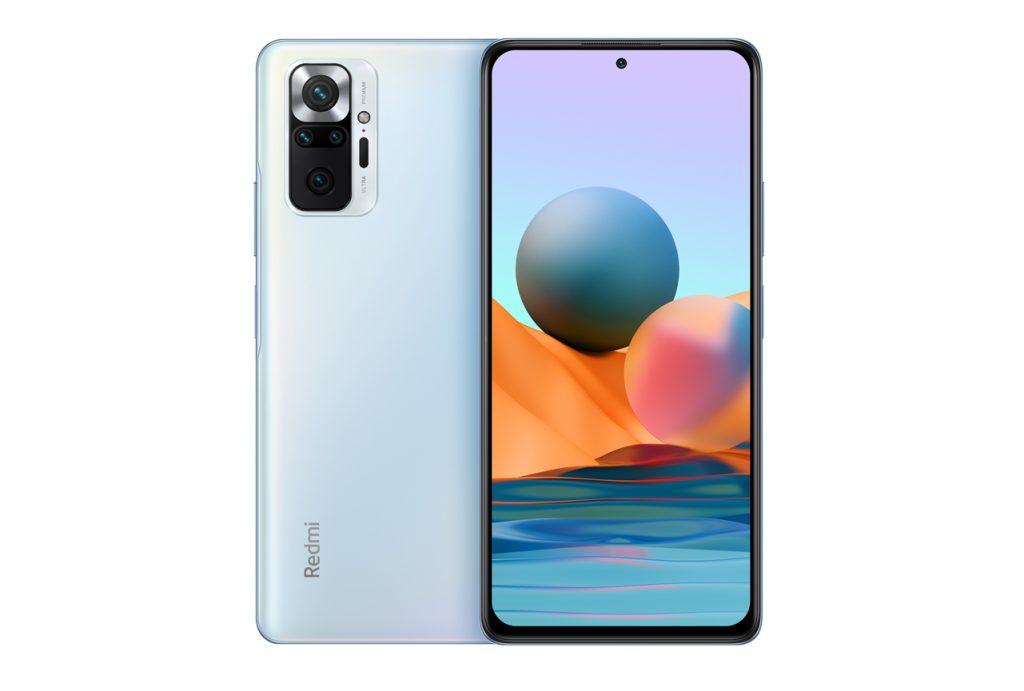Released in March 2021, the Xiaomi Redmi Note 10 Pro’s price at launch places it in our Advanced ($200-399) segment. It comes with a number of pleasing features, including a multi-camera setup with a main 108 MP camera. Let’s see how well its battery performs in our tests.
Key specifications:
- Battery capacity: 5020 mAh
- 33W charger included
- 6.67-inch, 1080 x 2400, up to 120 Hz AMOLED display (tested at 60 Hz default setting)
- Qualcomm Snapdragon 732G (8 nm) chipset
- Tested RAM / storage combination: 6 GB + 128 GB
About DXOMARK Battery tests: For scoring and analysis in our smartphone battery reviews, DXOMARK engineers perform a variety of objective tests over a week-long period both indoors and outdoors. This article highlights the most important results of our testing. (See our introductory and how we test articles for more details about our smartphone Battery protocol.)
Test summary
Scoring
Sub-scores and attributes included in the calculations of the global score.

Xiaomi Redmi Note 10 Pro


Key performances
These key points are derived from the lab measurements during testing and do not figure into the overall score. The lab measurements, however, are used for the overall score.
 68th
68th
 22nd
22nd
Pros
- Provides 2.5 days of autonomy with moderate use
- Good charging time from 0% to 80% for its price range
- Good quick boost (5-minute) charging
Cons
- Struggles with navigation and calling compared to other devices in its price range
- Disappointing performance for 3G calling and 4G video streaming in calibrated testing
The Xiaomi Redmi Note 10 Pro competes in the Advanced segment with top performers Oppo A74 and Samsung M51 and does a pretty good job of holding its own against its rivals. The table below shows the battery capacity, charger, display type and resolution, and processor specifications for the three devices.
|
Xiaomi Redmi Note 10 Pro |
Oppo A74 |
Samsung Galaxy M51 |
|
| Battery (mAh) |
5020 |
5000 |
7000 |
| Charger |
33W |
33W |
25W |
| Display type |
AMOLED |
AMOLED |
AMOLED |
| Resolution |
1080 x 2400 |
1080 x 2400 |
1080 x 2400 |
| Processor |
Qualcomm Snapdragon 732G |
Qualcomm Snapdragon 662 |
Qualcomm Snapdragon 730G |
Autonomy (78)
How long a battery charge lasts depends not only on battery capacity, but also other aspects of the phone’s hardware and software. The DXOMARK Battery autonomy score is composed of three performance sub-scores: (1) Stationary, (2) On the go, and (3) Calibrated use cases. Each sub-score comprises the results of a comprehensive range of tests for measuring autonomy in all kinds of real-life scenarios.
DXOMARK measured 67 hours of autonomy with moderate use for the Xiaomi Redmi 10 Pro. In terms of linearity, the last 20% of the battery indicator represents 17.9% of the true remaining capacity, but despite this slight difference, users can trust the battery gauge.

Stationary
Xiaomi Redmi Note 10 Pro
89
104
A robot housed in a Faraday cage performs a set of touch-based user actions during what we call our “typical usage scenario” (TUS) — making calls, video streaming, etc. — 4 hours of active use over the course of a 16-hour period, plus 8 hours of “sleep.” The robot repeats this set of actions every day until the device runs out of power.
Considering its battery size (5020 mAh), the Xiaomi Redmi Note 10 Pro’s performance in our TUS test using factory default settings was good, reaching just over 70 hours. By comparison, the Oppo A74 (5000 mAh) reached 67 hours and the Samsung Galaxy M51 (7000 mAh) achieved nearly 81 hours. In its price range, the Redmi Note 10 Pro’s duration is 2.5+ hours longer than average. The Xiaomi device was particularly stable at night, losing on average only 1% of its battery charge.

On the go
Xiaomi Redmi Note 10 Pro
66
96
Using a smartphone on the go takes a toll on autonomy because of extra “hidden” demands, such as the continuous signaling associated with cellphone network selection, for example. DXOMARK Battery experts take the phone outside and perform a precisely defined set of activities while following the same three-hour travel itinerary for each device.
While on par with its rivals for social apps and camera use in our on the go tests, the Redmi Note 10 Pro was far behind for navigation and calling.

Calibrated
Xiaomi Redmi Note 10 Pro
68
100
For this series of tests, the smartphone returns to the Faraday cage and our robots repeatedly perform actions linked to one specific use case (such as gaming, video streaming, etc.) at a time. Starting from an 80% charge, all devices are tested until they have expended at least 5% of their battery power.
In our calibrated use case tests, the Redmi Note 10 Pro put in an average performance among devices in the Advanced segment, with results very close to those of the Oppo A74, but far behind those of the Samsung Galaxy M51. Again, the Xiaomi’s 3G calling performance was poor, coming in last in its price segment; moreover, its results for all tests when its screen was on were average or below average. As with its TUS testing, it showed good results in idle mode with screen off, however.
Charging (77)
The DXOMARK Battery charging score is composed of two sub-scores, Full charge and Quick boost. Full charge tests assess the reliability of the battery power gauge; measure how long it takes to charge a battery from 0% to 80% capacity and from 80% to 100%; and measure how long and how much power the battery takes to go from an indicated 100% to an actual full charge. With the phone at different charge levels (20%, 40%, 60%, 80%), Quick boost tests measure the amount of charge the battery receives after being plugged in for 5 minutes.
The Xiaomi Redmi Note 10 Pro provides a decent charging experience for both full charge and quick boost.

Full charge
Xiaomi Redmi Note 10 Pro
71
121
It takes the Redmi Note 10 Pro 1 hour 32 minutes to go from 0 to a completely full charge, which is 20 minutes slower than the Oppo A74 (1 hour 11 minutes), but almost an hour faster than the Samsung M51 (2 hours 25 minutes). When its battery gauge shows 100%, the Redmi Note 10 Pro is really only 97.2% full; however, it takes the Xiaomi device only 10 minutes longer to charge to full capacity.

Quick boost
Xiaomi Redmi Note 10 Pro
80
111
Though the Oppo device provides more than 4.5 hours of autonomy when charged for 5 minutes with 20-60% power remaining, the Xiaomi device provides more than 4 hours of autonomy under the same conditions, which is good for an Advanced device. (With 80% power remaining, the autonomy drops to about 3 hours for the Xiaomi and 2.5 hours for the Oppo.) The Samsung M51 never provides more than 2–2.5 hours of additional autonomy for a 5-minute charge.
| Xiaomi Redmi Note 10 Pro | Oppo A74 | Samsung Galaxy M51 | ||
| Autonomy boost (hh:mm) | 20% | 4:37 | 4:43 | 2:12 |
| 40% | 4:04 | 4:45 | 2:26 | |
| 60% | 4:04 | 4:54 | 2:06 | |
| 80% | 2:59 | 2:28 | 2:05 | |
| Percentage boost | 20% | 9.4 % | 10.2 % | 4.1 % |
| 40% | 8.3 % | 10.3 % | 4.5 % | |
| 60% | 8.3 % | 10.6 % | 3.9 % | |
| 80% | 6.1 % | 5.3 % | 3.9 % | |
| Energy consumed | 20% | 2504 mWh | 2477 mWh | 1405 mWh |
| 40% | 2201 mWh | 2495 mWh | 1553 mWh | |
| 60% | 2201 mWh | 2575 mWh | 1342 mWh | |
| 80% | 1618 mWh | 1297 mWh | 1331 mWh |
Efficiency (81)
Our Efficiency score comprises two sub-scores, Charge up and Discharge. Charge up is the efficiency of a full charge (how much energy is drained from the wall outlet vs the energy capacity of the battery, as well as the efficiency of the charger and its residual consumption). Discharge is how much current the smartphone drains from the battery when in use (the ratio of battery capacity to autonomy). Better autonomy with a smaller battery means better efficiency.

Charge up
Xiaomi Redmi Note 10 Pro
65
105
While the Redmi Note 10 Pro has excellent adapter efficiency (close to 90%), its overall efficiency (including smartphone circuitry and battery) is behind that of both competitors.

Discharge
Xiaomi Redmi Note 10 Pro
88
121
The Redmi Note 10 Pro comes across as a very efficient device in idle mode and during our Typical Usage scenario, but its consumption in calibrated mode in many use cases is higher than its competitors, especially during calls and when streaming video streaming via 4G.
Conclusion
The Xiaomi Redmi Note 10 Pro had a few notable weaknesses in its battery performance, especially for 3G calling both in on the go and in calibrated testing. However, for charging in particular, it came close to matching its Oppo rival and soundly beat the Samsung, leading to a satisfactory performance overall.



DXOMARK encourages its readers to share comments on the articles. To read or post comments, Disqus cookies are required. Change your Cookies Preferences and read more about our Comment Policy.